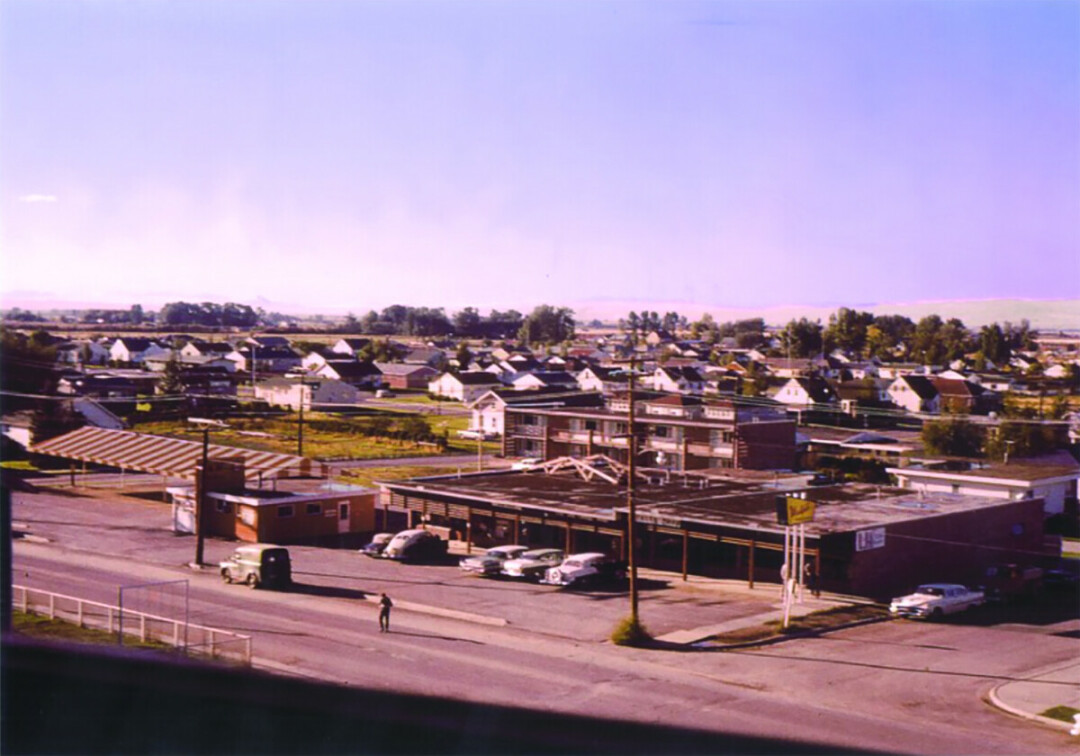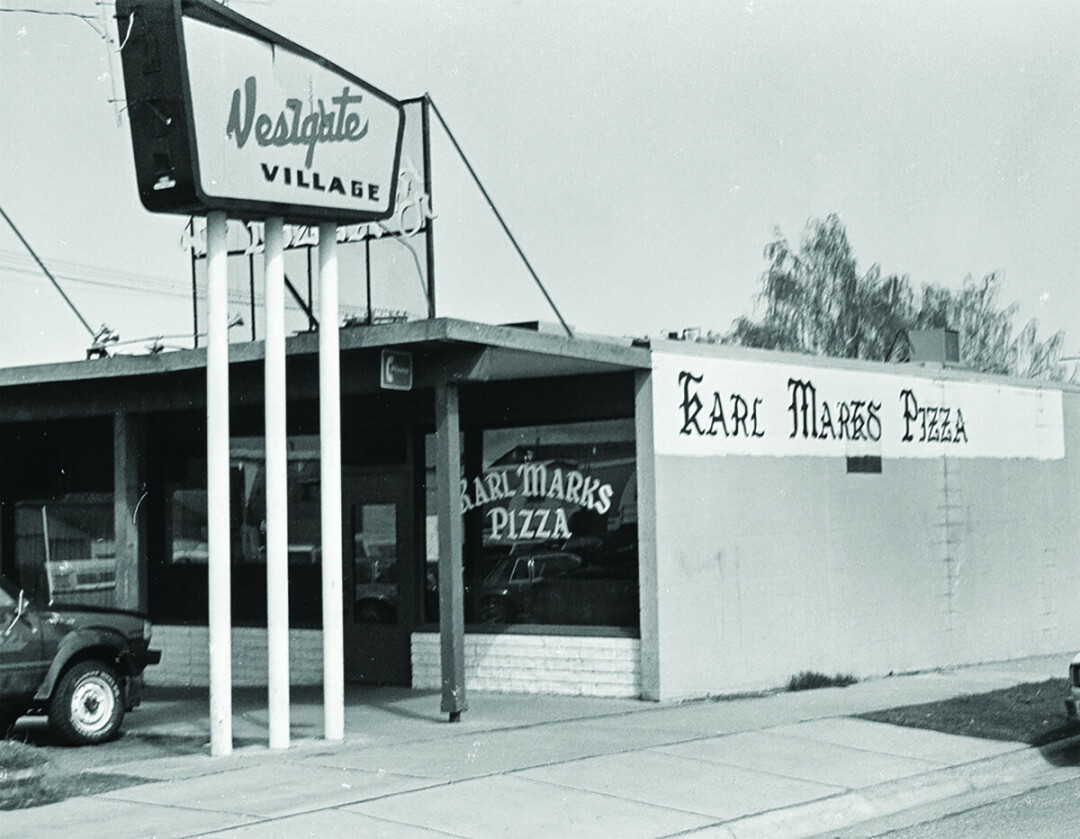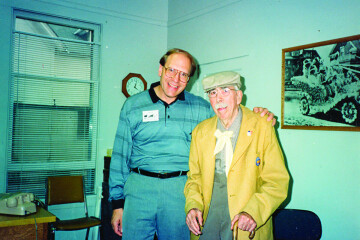Bozeman’s First Shopping Center 1003 W. College St.
The end of World War II presented strong economic growth, increased population, growing numbers of home ownership, new enrollment in higher education, and increased personal use of the automobile throughout the United States. Although a few shopping centers were known in large metropolitan areas, their popularity on the American landscape was not fully realized until the 1940s and ‘50s. The American shopping center became one of the main symbols of post-war progress.
Although Bozeman was considered a small town compared with so many others in the United States, it followed the same response to developing shopping centers. Westgate Village Shopping Center on West College Street, across from the Montana State College (MSC, now Montana State University) campus, was Bozeman’s first planned multi-unit shopping center.
Westgate Village, originally with its four shops and one restaurant, catered to the hustle and bustle of the college neighborhood. The shopping center served as small commercial focus near the campus, and led the way to the future development of other small, as well as large shopping centers in the community.
For almost a century, Bozeman was known as a small but important agricultural and commerce community, and as the seat of Gallatin County. The community was linked to the rest of the United States by the Bozeman Trail and other wagon roads beginning in 1866, by two trans-continental railroads starting in 1883, by public roads and highways since 1913, and by an airport beginning in 1928.
Bozeman had a recorded population of 168 people in 1870, and witnessed steady growth each decade that followed. By 1940, and the beginning of World War II, Bozeman listed over 8,600 residents, with an additional 10,000 people living throughout the county. Up until that time, Bozeman’s commercial district was centered within about six blocks of individual stores and establishments along Main Street. The MSC campus (established in 1893) was originally located “out of town,” almost one-mile from the downtown Main Street area.
Bozeman’s population grew approximately 26% between 1940 and 1950, when it reached 11,325; it grew another 31% by 1960, to 13,361 residents. This growth was realized in areas to the south and west of the Main Street commercial area. Much of the growth was due to staggering increases in student enrollment and related employment opportunities at MSC. The college experienced an astounding 147% increase in enrollment from 1945 to 1946, mostly due to returning U.S. veterans taking advantage of the G.I. Bill. The development of Bozeman’s first shopping center occurred in response to this vibrant post-war growth.
Westgate Village Shopping Center was designed by Montana native and locally renowned architect Hugo Eck, who graduated from MSC with a degree in architecture in 1941. Hugo and Dorothy Eck (later a Montana State Senator) were married in 1942, after which Eck worked as a naval architect, following his keen interests in modern architecture with a focus on functional design. Following World War II, Hugo Eck became a professor of Architecture at MSC. He later designed many commercial buildings and residences in Bozeman and other areas of Montana, including additions to the former Deaconess Hospital and Hillcrest Senior Living.
Eck’s interests in modern architecture at the Westgate Village Shopping Center are exhibited by an emphasis on functionality, design elements of simple glass storefronts, an open floorplan, and a horizontal design with a flat roof and a covered walkway served by adjacent parking.
Westgate Village was developed by Walter Mecklenburg and opened for business in November of 1957, including the businesses of L & H Café, Cresap’s Men’s Clothing, Hauseman’s Ski and College Shop, Village Casuals Women’s Wear, and Gallatin Drug. Mecklenburg understood the potential success of area shopping centers and went on to develop the University Square Shopping Center on 23rd Avenue.
Over 30 different businesses operated at Westgate Village through the years including Karl Mark’s Pizza, the Next Door Saloon, Cactus Records, Accent Camera & Photo, and the Community Food Co-Op. Today, the building serves customers from Colombo’s Pizza & Pasta, the Game Room, Greener Pastures Dispensary, and The Break Room.
Westgate Village Shopping Center not only served the Montana State College/University campus and neighborhood with local shopping and dining, it also served as the model for other later shopping centers. Many of the other commercial centers used the same “modern” style of four to six shops with storefronts and simple design centered on convenient parking areas.
Following the Westgate Village model were the small structures of Palffy Center on West Main Street (1960), Hinky Dink’s Shops on Tai Lane (1961), the former Heeb’s Food Center at East Main and South Wallace Ave (1964), and the Beaver Pond Center at 1710 West Main Street (about 1963). Other larger shopping centers followed with Buttrey’s Shopping Center at 1503 West Main Street (1960), Skagg’s Center on North 7th Avenue (about 1978), Gallatin Valley Mall (1980), and University Square Shopping Center on 23rd Avenue (1988).
The Westgate Village Shopping Center has retained most of its architectural details and setting as it was built in 1957. Additionally, the building has continued with its original planned use as a neighborhood commercial center. Cassie Colombo and Seth Cooper, owners of the Westgate Village Shopping Center and Colombo’s Pizza & Pasta, have realized the unique standing in Bozeman’s history that significant mid-century historic buildings can hold. Their efforts have included historic documentation and preservation planning. The property is currently being nominated to the National Register of Historic Places as a significant example of mid-century architecture and Bozeman’s first planned shopping center.
Future work on the building will include the reconstruction of the original Westgate Village sign, and restoration of important architectural details. This historic property and the related projects may not seem uncommon or unusual, since its place in history is similar to many of the immediate memories that we share about Bozeman. However, preserved buildings, no matter what their age, can greatly add to the cultural and aesthetic value of our community.
Scott Carpenter is a professional archaeologist, historian, and preservation planner with InteResources Planning, Inc. in Bozeman.

